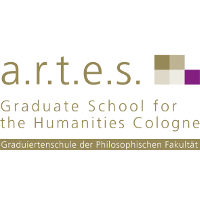Dissertationsprojekt von Jakob Halfmann
A Grammatical Description of the Katë Language (Nuristani) (working title)
The goal of this project is a grammatical description of the Katë language [ISO-codes bsh and xvi], the largest language of the Nuristani language family by number of speakers (probably around 60.000-80.000). The Nuristani family is a small group of Indo-European languages which, historically speaking, likely represents an independent third branch of the Indo-Iranian family, next to the Iranian branch (e.g. Persian, Pashto, Kurdish) and the Indo-Aryan branch (e.g. Hindi-Urdu, Panjabi, Bengali). The Katë language is spoken in the northwestern and eastern parts of the high-mountain province of Nuristan, Afghanistan, a few villages of neighboring Munjan valley in Badakhshan province, Afghanistan, as well as a number of villages across the border in Chitral district, Pakistan. The language is not referred to with a single term by all of its speakers; the ethnic groups speaking the language are known as Katë, Kom, Mumo, Kshto, Jashi, Binyo and Jamcho. Most speakers also more broadly identify themselves as ethnic Nuristanis.
The Katë language has some remarkable typological features, including a complex system of spatial orientation, which makes reference to the physical environment (course of rivers, mountain slopes), as well as a unique inventory of retroflex sounds, including nasalized retroflex approximants. As a member of the Nuristani family, its grammatical features can also provide significant clues for research into the historical development of all Indo-Iranian languages and Indo-European languages in general.
In this project the language will be grammatically analyzed on the basis of existing speech recordings and written materials, as well as published and unpublished descriptive sources in Russian and Persian. Original field research with diaspora speakers in Europe and in native speaking communities in Pakistan is also planned. In the current situation of a worldwide pandemic, it remains to be seen to what extent fieldwork in Pakistan will be feasible.
Short biography
Jakob Halfmann studied Linguistics at Leipzig University, graduating with a B.A. in 2017, following a one-year stay at Waseda University, Tokyo. He went on to study Linguistics and Languages & Cultures of the Islamic World at the University of Cologne with a focus on historical linguistics, language documentation and Arabic. He gained his M.A. in 2019. His master's thesis dealt with the historical phonology of the Nuristani languages. Since 2017 he has also been working as a research assistant in the DFG-funded project "VedaWeb", an online platform for linguistic research on the Rigveda, the oldest surviving Sanskrit text. His dissertation supervisors are Prof. Dr. Eugen Hill (University of Cologne), Prof. Dr. Nikolaus Himmelmann (University of Cologne) and Prof. Dr. Almuth Degener (Johannes Gutenberg University Mainz).
Contact: jakob.halfmann(at)gmx.de
Presentations
Advances in the Historical Phonology of the Nuristani Languages. International Workshop on the Languages of Nuristan, November 2019. University of Cologne.
An Unusual Grammaticalization Path of Futures in Vedic Sanskrit and Some Modern Hindu Kush languages. AG7 - "Approaching linguistic diversity from an evolutionary perspective - Towards a typology of future tenses" at the 42nd Annual Conference of the German Linguistic Society (DGfS), March 2020. University of Hamburg.
Cover photo: The Shkurigël (Ṣkúrigɘl) river in the Katë-speaking area of northeastern Nuristan, February 10, 2011, rpolsdorfer.
